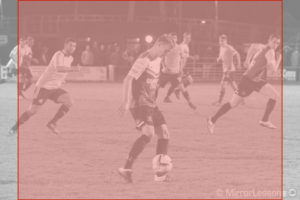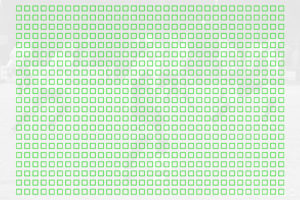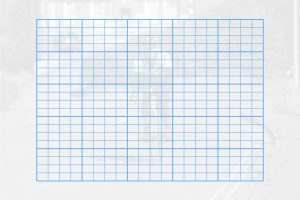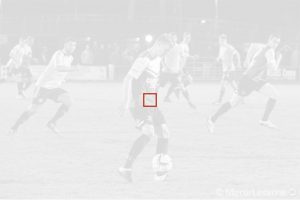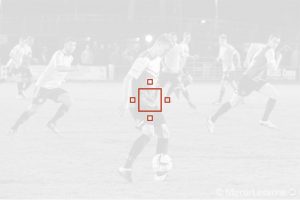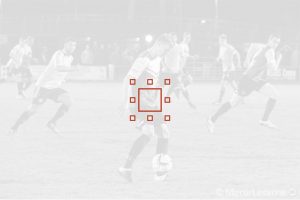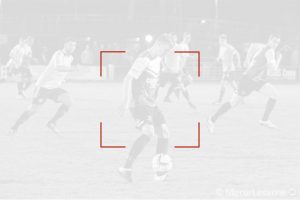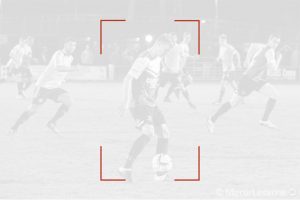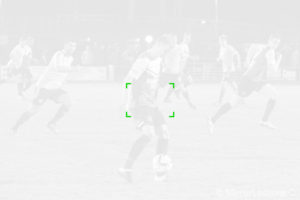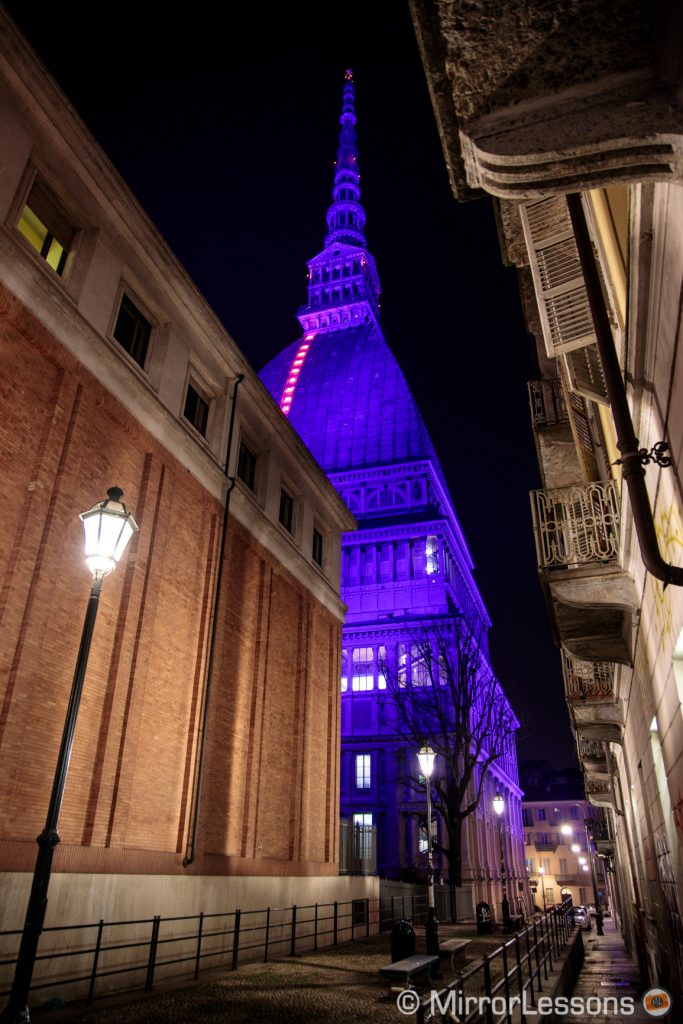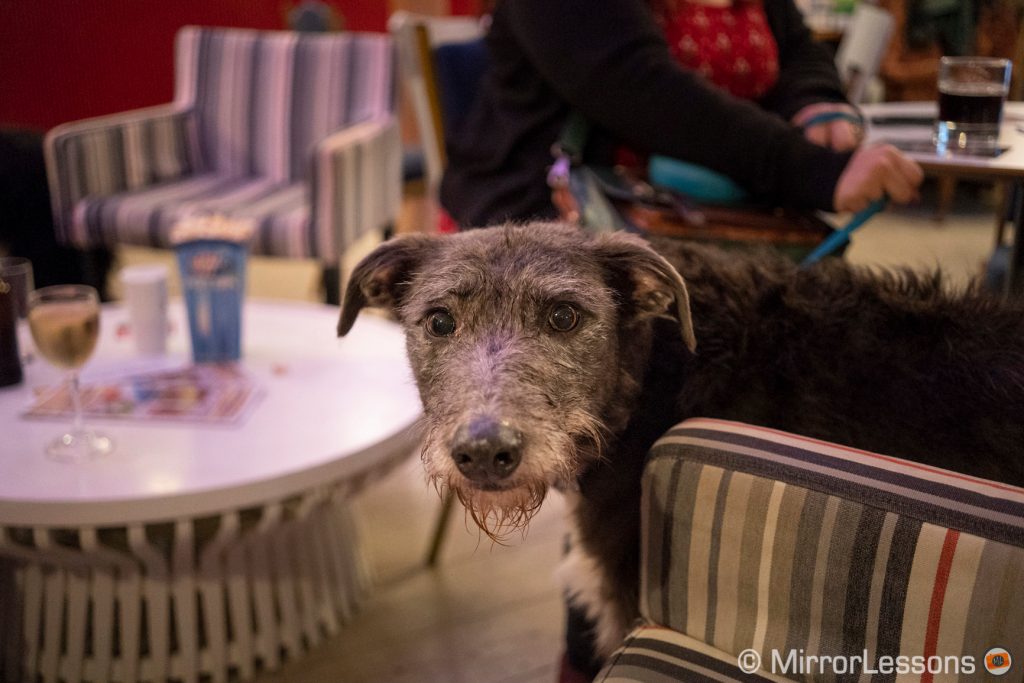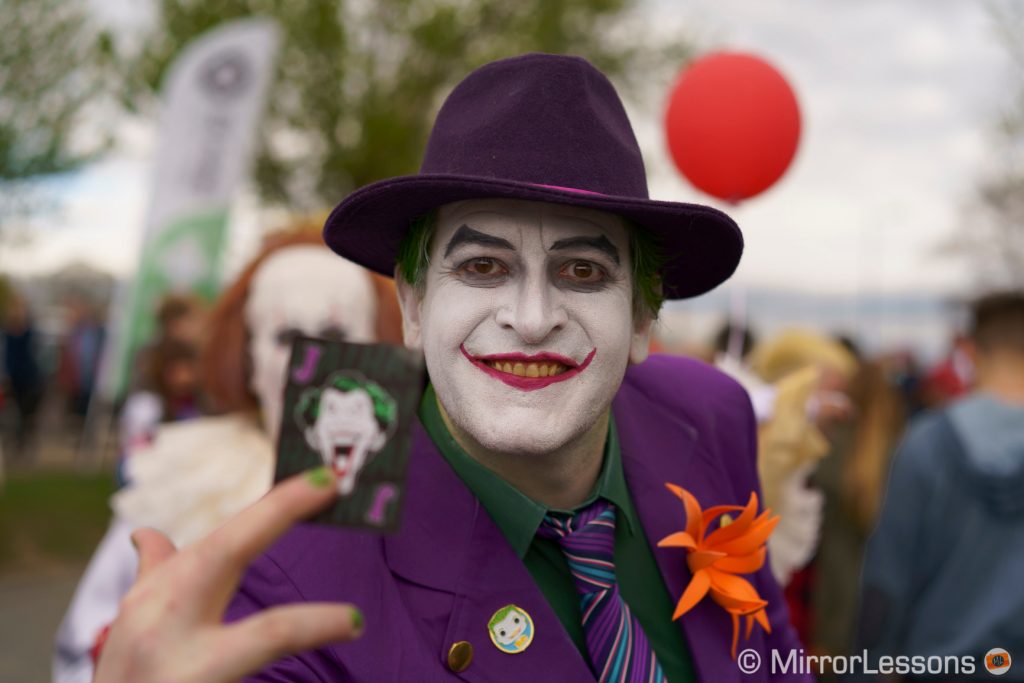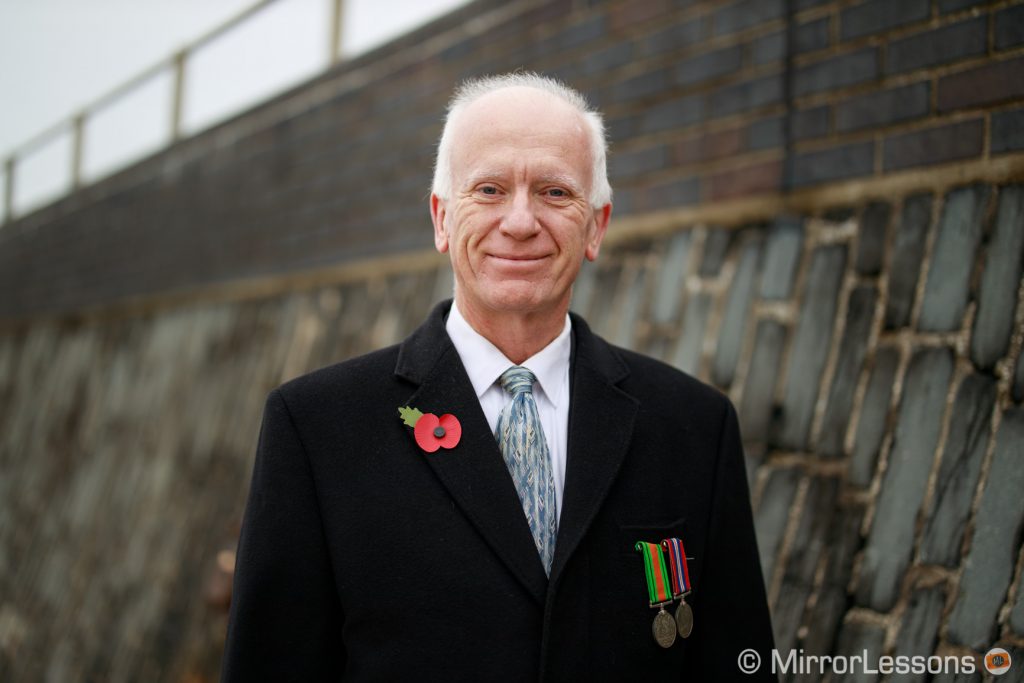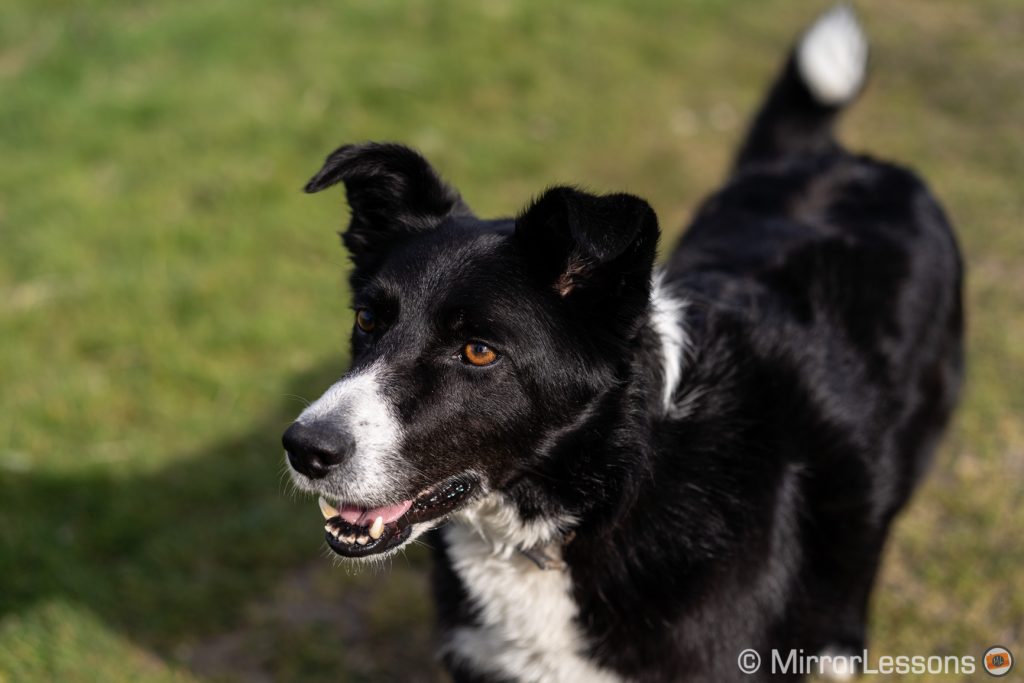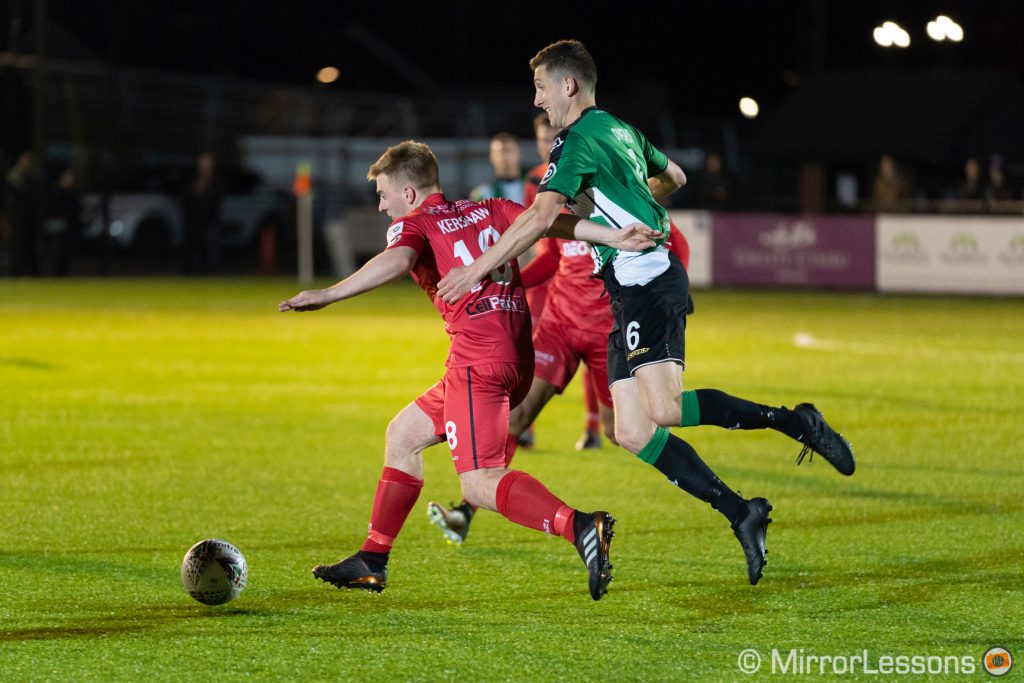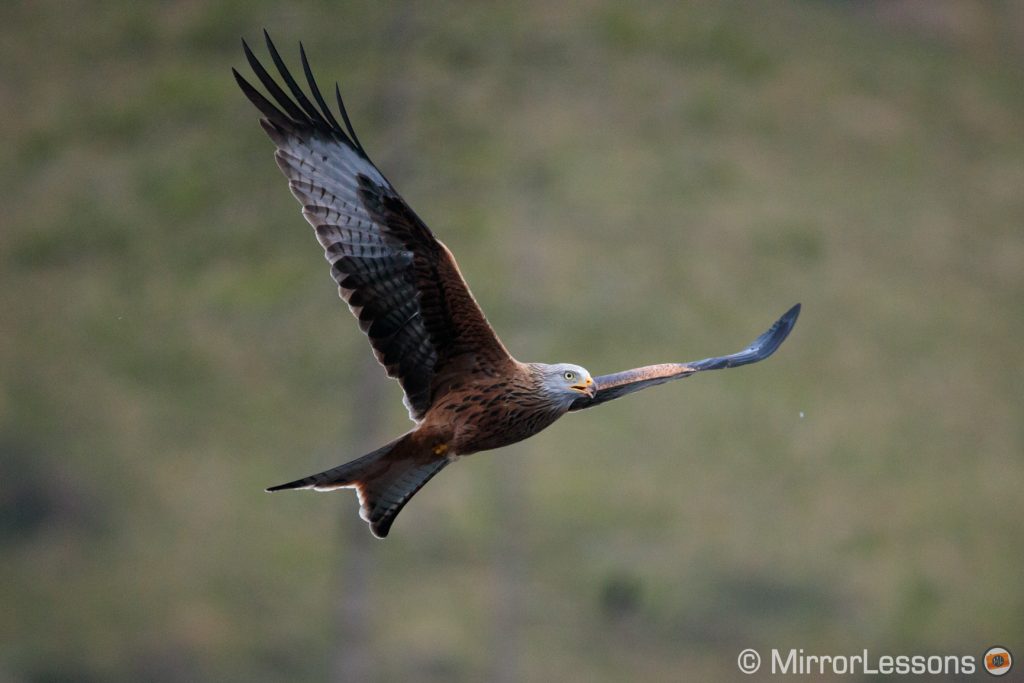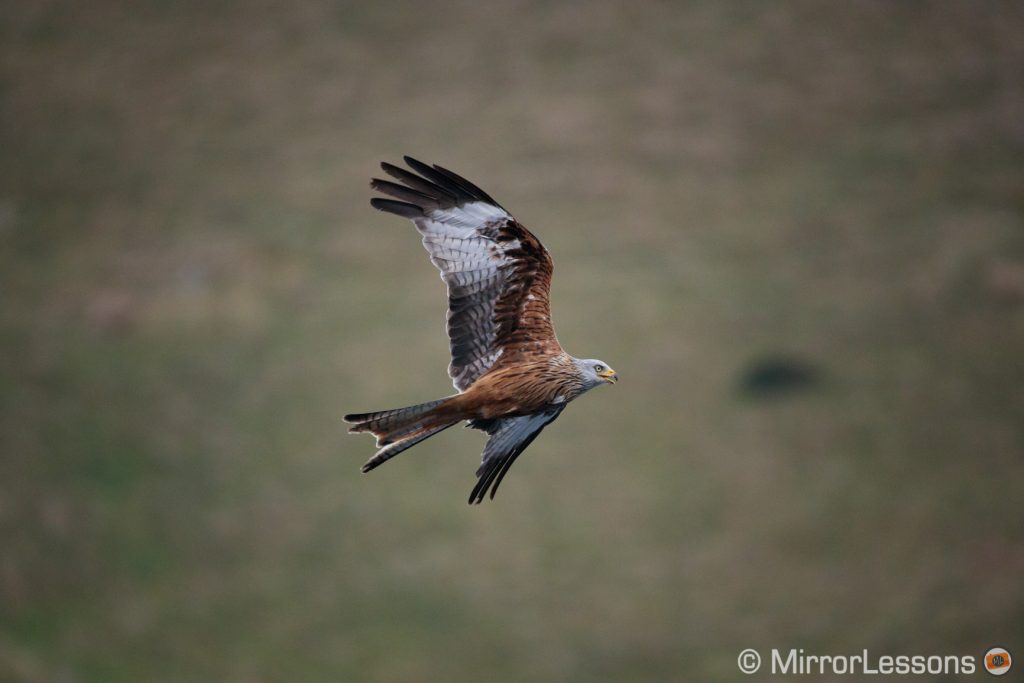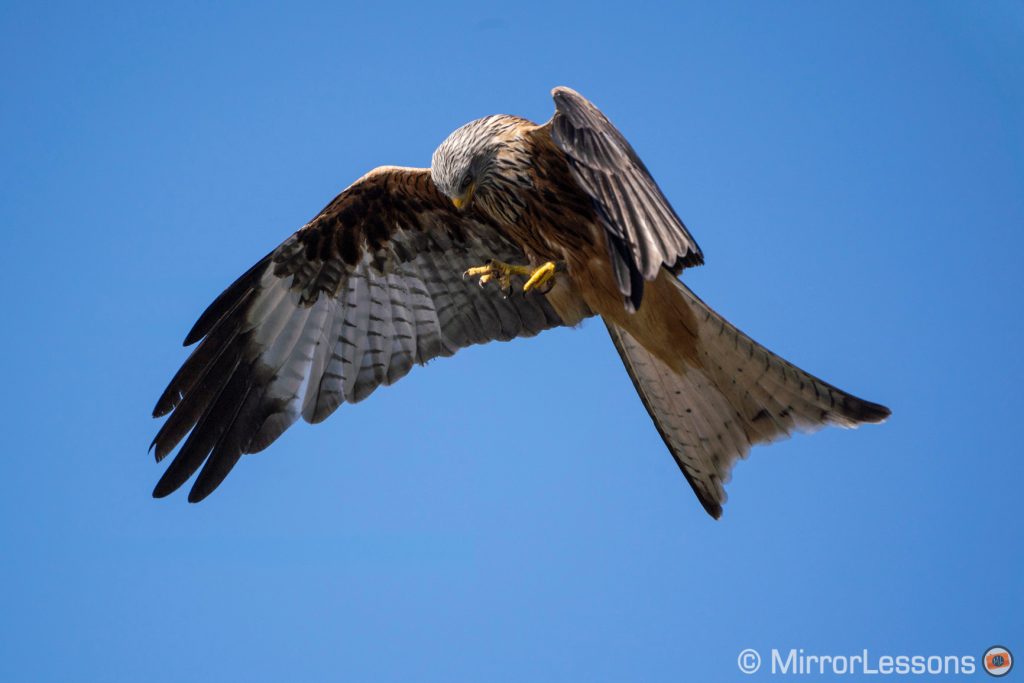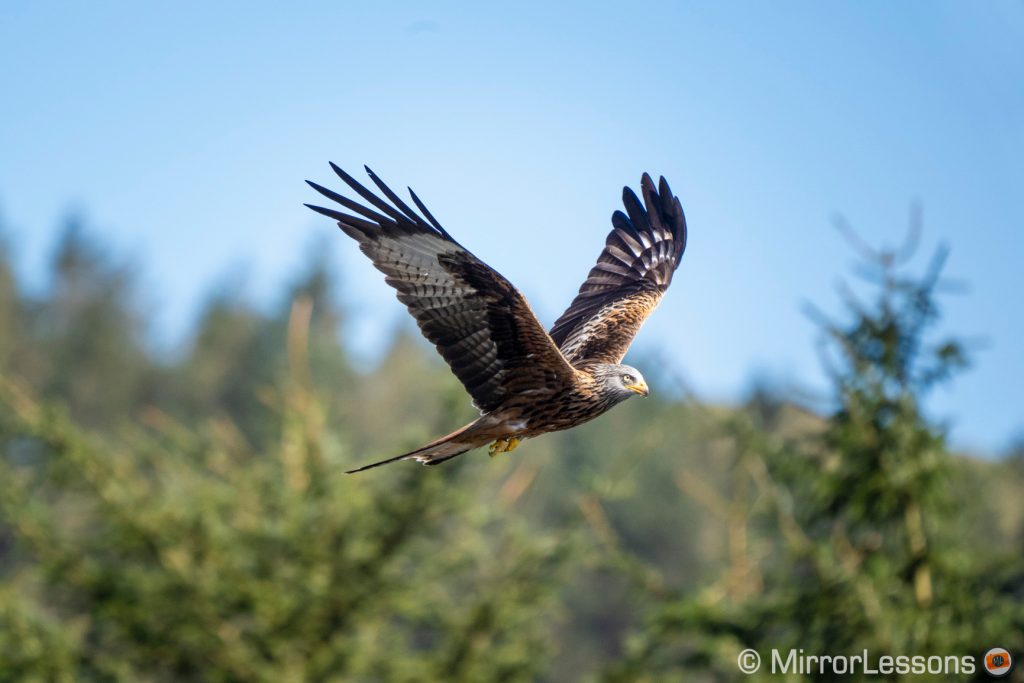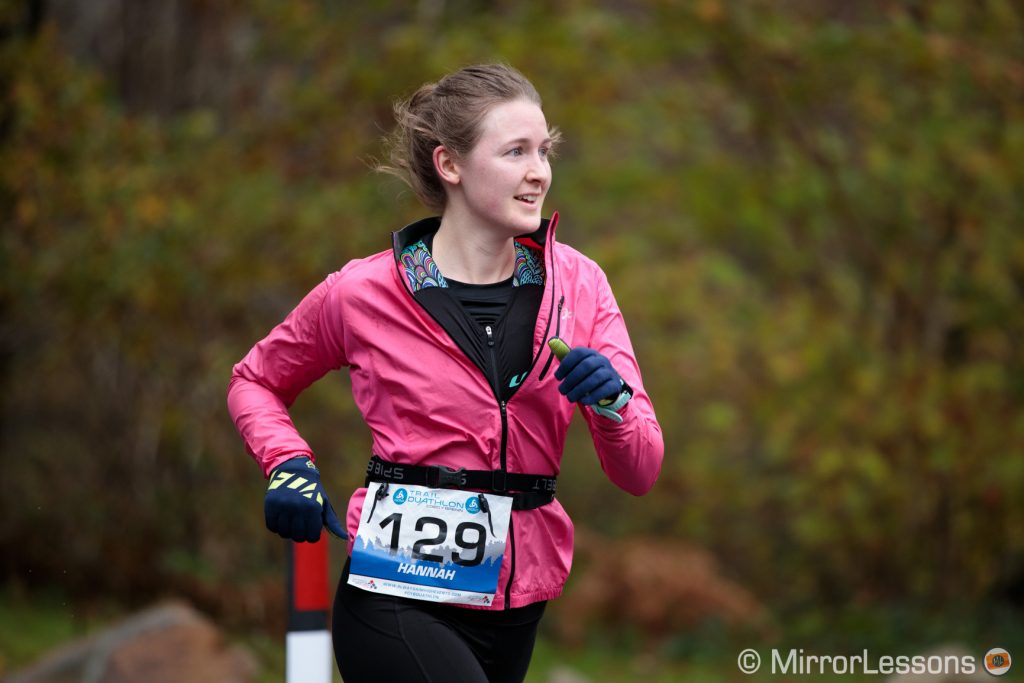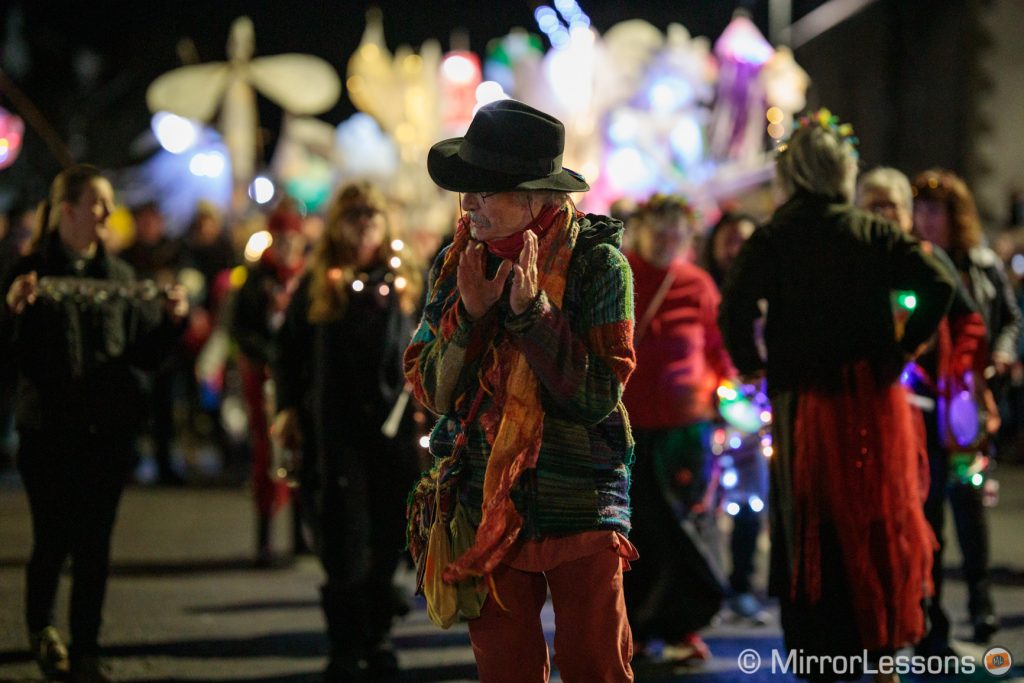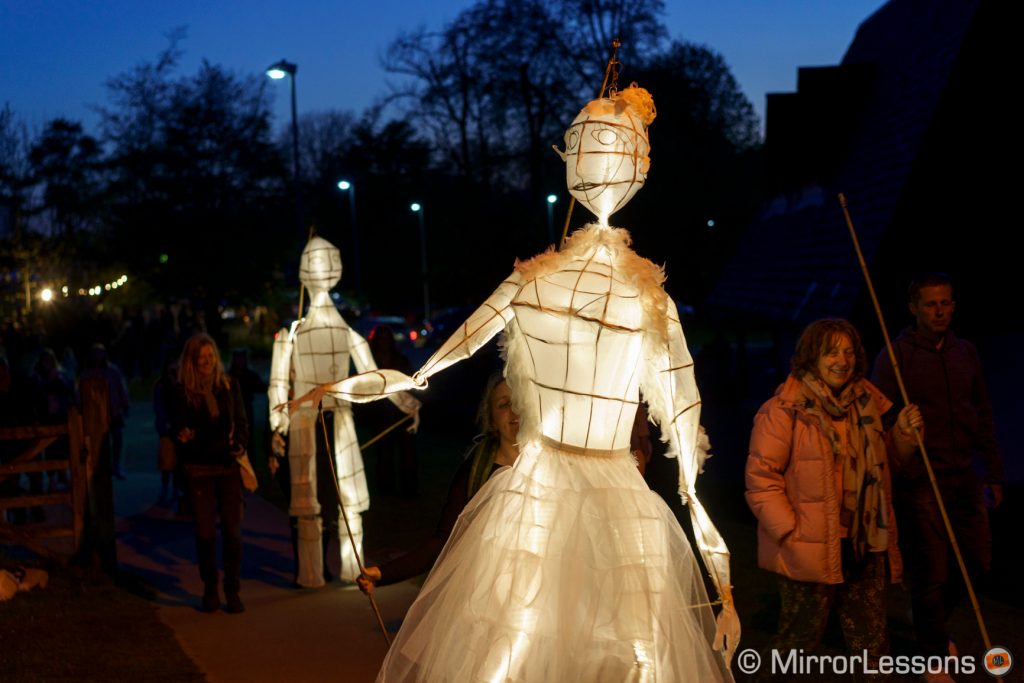You are now on page 3. Here you can read about our experience with the autofocus and using the cameras for sports and wildlife:
- Page 1: design and functionality
- Page 2: image quality (stills)
- You are on page 3: autofocus and speed
- Page 4: image stabilisation, video, other features and conclusion
Table of Contents – Page 3
1. Autofocus and system settings
2. Single / One-Shot AF and Face / Eye detection
3. Continuous / Servo AF
4. Shutter, continuous shooting speeds and buffer
Autofocus system and settings
Trivia: Canon uses different names for settings such as Single AF (called One-Shot AF) and Continuous AF (called Servo AF).
Both cameras feature an advanced autofocus system with phase detection but the technology is different.
The EOS R uses Dual Pixel CMOS AF where each pixel on the sensor is made up of two photodiodes. When used together the camera creates the image; when used separately it focuses by measuring the phase difference. The Canon can use a maximum of 5,655 AF points across almost the entire surface of the sensor (88% width, 100% height).
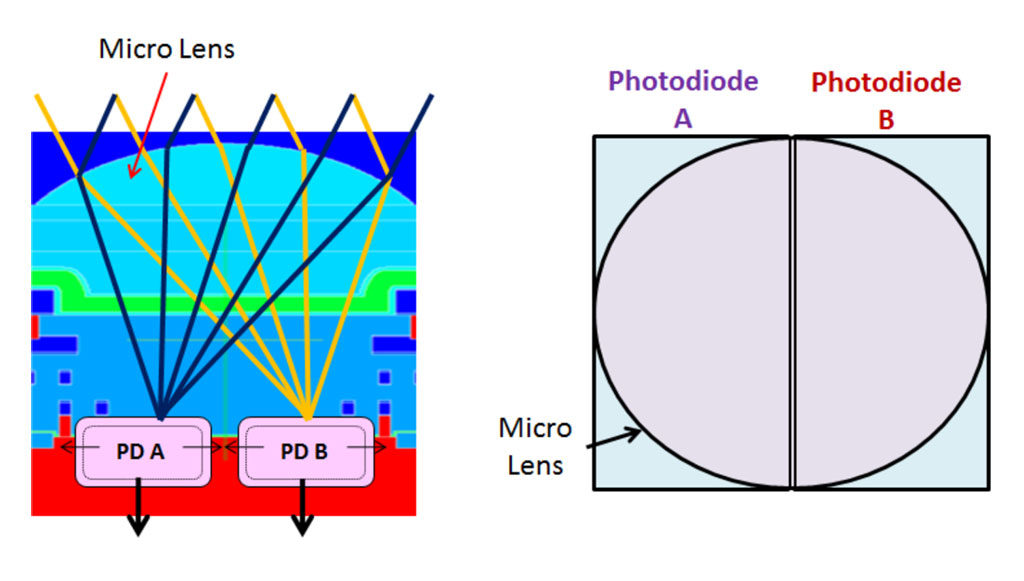
On the A7 III, there are fewer phase detection points embed into the pixels (693, which is still a very good amount) and they are only used for calculating focus. They are distributed over 93% of the sensor area. There are also 425 contrast detection points that the camera tends to use in S-AF mode or in extreme low light conditions.
In terms of focus areas, the EOS R offers a good variety including:
- 1-point AF with two sizes available (normal or small)
- Expand AF area where the camera uses additional points around the single one to track the subject better. There are two options (one with 4 surrounding points, and a second with 9 surrounding points)
- Zone AF is a larger area where the camera uses multiple points
- Large Zone AF is an even bigger area that can be set in two modes (vertical or horizontal) depending on your needs
- Tracking where the camera uses the entire AF area. It is also the only setting that lets you activate face and eye detection. You can set an initial focus point to start with.
Note that if you don’t use all the area modes, you can limit the selection on the EOS R.
The A7 III has a balanced selection of AF areas such as:
- Wide where the camera uses all the points available automatically
- Zone where a group of 9 large areas can be moved around
- Centre which is a fixed single area at the centre
- Flexible Spot that can be moved and varied in three sizes (Small, Medium, Large)
- Expand Flexible Spot which is similar to Expand AF area on the Canon
- Lock-On AF which is another name for tracking.
The number of focus points on the EOS R is impressive, but it takes a while to move the single point around the screen since there are 87 positions horizontally and 65 positions vertically. Using the touch screen can speed up the process significantly.
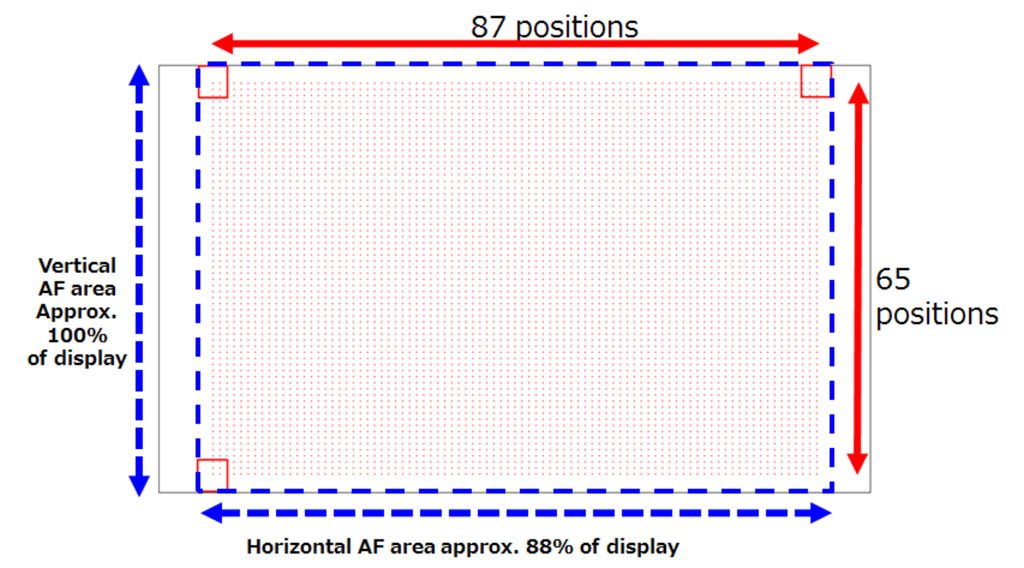
On the A7 III, it takes less time to move the single area, in part because you don’t go through all the native positions (it’s around 18 horizontal and 16 vertical rather than 33/21 respectively).
Both cameras include extra settings such as:
- memorise different AF area positions when switching from vertical to horizontal orientation
- fine tune focus manually after focusing automatically (called DMF on the Sony)
- start autofocus without pressing the shutter button, back button focus or touch screen (called Continuous AF on the EOS R, Pre-AF on the A7 III).
In addition to the standard AF-S, AF-C and MF, the A7 III has another mode called AF-A where the camera automatically switches from single to continuous if it detects the subject moving. It usually works quite well, although it can be a bit slow to react.
On the Sony you can also save a specific area mode and position to a custom button which you can then quickly recall.
Single / One-Shot AF and Face/Eye detection
The EOS R works seamlessly in single mode (One Shot AF) and is among the quickest mirrorless cameras I have ever tested. Acquiring focus is really fast and it hardly ever hesitates. Neither Heather nor I can recall a single time it refused to focus, hunted or slowed down significantly.
I always found the A7 III slower in S-AF than C-AF, mainly because the camera tends to prioritise contrast detection which means that the lens hunts back and forth to assess contrast and lock onto the subject. Most of the time, the speed is more than enough, but when compared to the Canon, the difference is noticeable.
The Canon has a pretty good rating in low light too. The minimum sensitivity is -6Ev with an f/1.2 lens, so approximately -4.5Ev with an f/2 aperture. Even when using an f/4 lens or slower, the camera remains quick and accurate. You need to shoot in complete darkness for its performance to slow down.
The A7 III has a minimum sensitivity of -3Ev which is fine for most situations. One evening I brought the camera to my local cinema where there isn’t a lot of light. I used the Samyang AF 35mm 2.8 which doesn’t have a very fast motor. My keeper rate wasn’t perfect and at times contrast detection was slow, but the performance was satisfactory overall.
Both cameras have face and eye detection capabilities. Sony has been a leader in this field for a while, thanks not only to its fast and accurate Face Priority mode (you can save up to 8 faces), but also EyeAF.
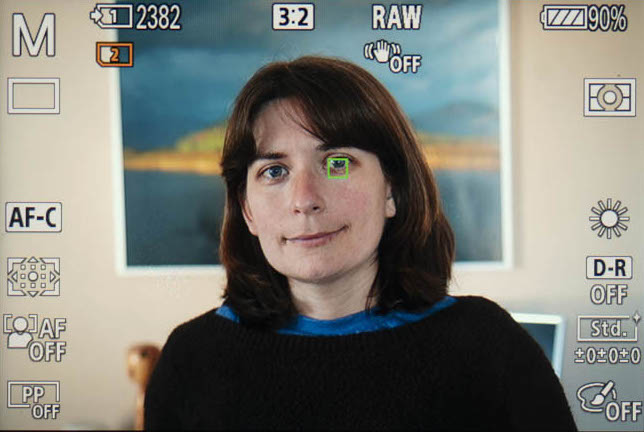
With the latter, the camera places a single phase detection point on the eye of the subject. It can be used in C-AF too and the keeper rate is always really high. Even when the subject is moving or turning his/her head, wearing masks or make-up, the camera rarely fails.
With firmware 3.0, EyeAF now works in real time when half-pressing the shutter button (you don’t have to assign it to a custom button necessarily). Unfortunately you can’t prioritise the left or right eye which would have been very useful.
The EOS R surprised me and is probably the mirrorless camera that comes the closest to the Sony in terms of speed and accuracy when there is one person in the frame. It is easy to activate and you can select face only or include eye detection from the same menu at any time.
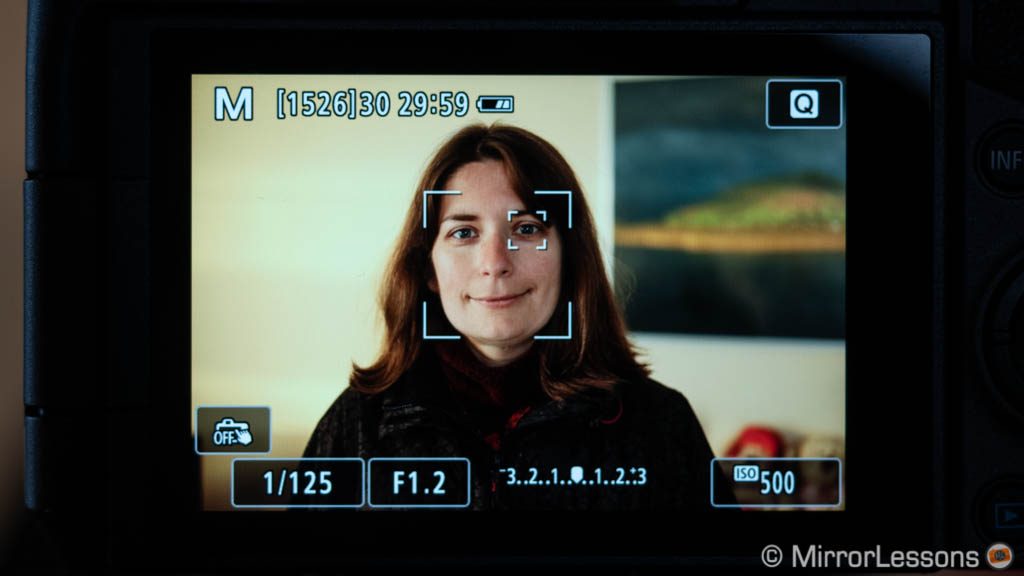
Thanks to firmware 1.2, Eye detection on the Canon now works in Servo/Continuous mode. Firmware 1.4 has improved the performance further.
Firmware 3.0 on the A7 III brings a new functionality: Eye AF for animals. It performs as well as it does for human beings when it comes to speed and accuracy. You can’t track animal and human eyes at the same time however, you need to choose one or the other in the menu.
The Sony had little issues tracking the eye of dogs and cats. The pet needs to be close enough so that it fills a large portion of the frame, otherwise the eye won’t be detected. It was able to detect sheep as well but I didn’t manage to make it work with birds, even when they were stationery on a branch or pole. Hopefully this can be improved further with other software updates.
- Read more about Eye AF for animals
Continuous / Servo AF
I’ve gathered a lot of experience with the A7 III in various conditions over the past few months. As I’ve written in other articles, I think it is one of the best mirrorless cameras you can buy when it comes to autofocus, not only for the excellent EyeAF mentioned above, but also its continuous autofocus performance. Low-light football, birds in flight, lantern parades, you name it – there’s nothing the camera can’t handle.
I was very curious to see how the EOS R would behave as Dual Pixel CMOS AF is widely recognised as one of the best AF systems. I remember trying it for the first time on a Canon C100 and I was blown away by its speed and accuracy, even in low-light conditions.
I didn’t get the chance to test the Canon camera at the same events where I used the Sony, but there was one test I managed to replicate. As you have probably guessed, I’m talking about birds in flight.
I used the Sigma 150-600mm f5-6.3 Contemporary, a lens I know well, with the EF-RF adapter that came in a kit with the camera. The day wasn’t great in terms of light, so I was forced to keep the ISO at around 6400 since the Sigma lens isn’t fast. It is also wintertime which means that these birds of prey don’t stay as long as they do during the warmer seasons.
Still, despite the more restricted conditions, the EOS R performed admirably with a keeper rate of 78%, or 98% if I include slightly soft results. Very rarely did it fail to lock onto the subject and the overall responsiveness was excellent.
I used a mix of Zone and Large Zone (horizontal) AF areas. On the EOS R you can tweak three different settings to improve the autofocus performance. Below are the parameters that gave me the best results:
- Tracking Sensitivity: +2
- Accel./decel. tracking: 0
- AF point auto switching: +2
The A7 III has a similar keeper rate for BIF (77% / 96%), which means that both cameras are very close to the best-in-class Sony A9 for this genre. Here as well the camera didn’t hesitate when locking onto the bird and was always reactive to any changes in speed and distance.
My favourite setting is Zone AF with AF Track Sens set to the maximum (+5). There are no other settings to control the AF behaviour on the Sony, but the 4D Focus technology does an amazing job of activating and keeping the phase detection points on the subject.
The EOS R delivered very promising results for the Red Kite test, but when we used it for other events with easier subjects, its behaviour wasn’t as constant. Our keeper rate was inferior even though we were using a fast lens (EF 70-200mm f2.8 III). Not a lot of images were out of focus but many frames came out slightly soft. The A7 III’s performance is much more consistent in all sorts of situations.

A nice moment during a duathlon but the focus isn’t perfect
I’m not sure how to explain this lack of consistency. It could be that the camera struggles more with subjects at a short distance. Dpreview mentioned unpredictable hunting with this camera which is something I’ve noticed as well on a few occasions. Personally, I feel that some improvements might be needed on a software level.
Another thing to keep in mind is that because the EOS R has more AF settings, the performance can decrease significantly if you choose the wrong combination.
For low light events, the keeper rate diminished a little in the case of both cameras, but they can still deliver excellent results overall. The EOS R in particular surprised us at a relative’s wedding, where we were using the RF 24-105mm f4. Despite not having a fast prime, it never hesitated when following the subject despite the low contrast.
There was one final test I wanted to perform, one where I already knew which camera would perform better, but I wanted to be 100% sure. For many years, we’ve known that you can adapt DSLR lenses to Sony models and retain good autofocus speed. Canon lenses tend to be the most popular choice so I was curious to see how the A7 III would perform against the EOS R with the same EF lens attached.
Unsurprisingly, the EOS R gave us a better keeper rate for the whole sequence, whereas the A7 III struggled to maintain focus at the end and took more time to acquire focus (which is why there are fewer frames in the sequence). Also note that C-AF doesn’t work with faster burst speeds than Low (3fps). I performed the test with two adapters (Metabones mark V and Sigma MC-11) and the Metabones did slightly better.


Shutter, continuous shooting speeds and buffer
The maximum shutter speed available on both cameras is 1/8000s. In Bulb mode, you can set a timer on the Canon so that you don’t have to keep your finger on the shutter release button.
The EOS R allows you to reduce the aperture and shutter speed range if you’re not planning to use all the values, or if you want to limit them when working in aperture or shutter speed priority modes.
Both have an electronic first curtain option, which is useful to reduce shutter shock when using slow shutter speeds hand-held for example.
The electronic first curtain shutter is called Silent LV shoot on the EOS R and has two options:
- Mode 1 is the standard mode and is identical to the one found on the A7 III. It can be used with continuous shooting as well.
- Mode 2 allows you to delay the noise of the second curtain. If you keep the shutter button fully depressed, the second curtain stays closed, so you only hear the quieter noise of the curtain coming down, but not the louder noise of the curtain going up until you depress the shutter button.
The electronic shutter allows you to take a picture in complete silence but neither can push the maximum shutter speed beyond 1/8000s. On the EOS R, burst speed is disabled. As for rolling shutter, the Canon suffers more as you can see below.
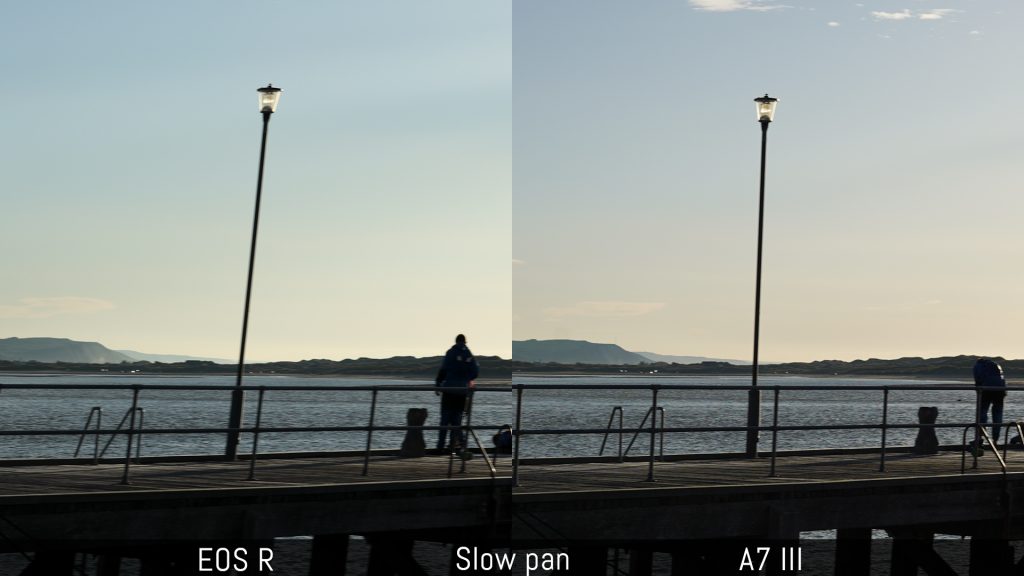
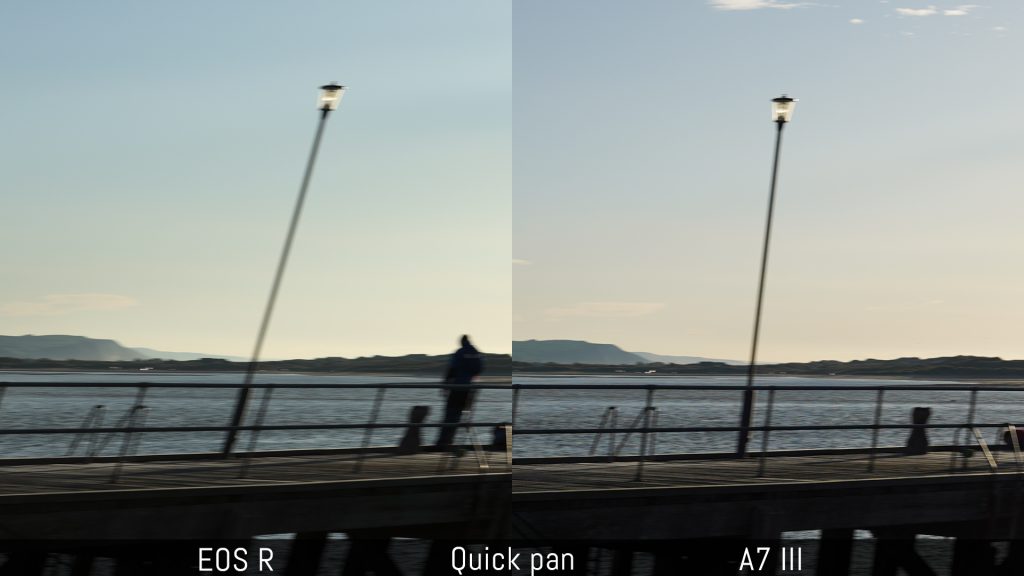
The EOS R has a maximum continuous shooting speed of 8fps in single AF. If you want continuous autofocus, the burst drops to 5fps with speed priority. If you want continuous AF with focus priority, you need to select the low mode where the speed drops to 3fps.
The A7 III has more interesting capabilities, with a maximum of 10fps with continuous AF. Up to 8fps, the Sony shows live view with blackouts, whereas at the maximum burst speed it displays the last image taken.
The EOS R has a different approach to live view: rather than showing blackouts, it alternates between live view and the last image taken. When shooting at the highest speed (8fps), you can choose to have this style of live view or simply see the last image taken.

It’s an interesting solution on paper but I find it more confusing in the real world because the sequence lacks smoothness. When you’re following a fast subject, you never sure if the movement you’re watching is live or not. No blackouts means you don’t have a constant change of brightness in the finder, but you also lose reference of what’s live and what’s already passed.
Both models have an anti-flicker mode that reduces the chance of banding when shooting bursts under certain artificial light sources. Note however that the continuous shooting speed can decrease.
Finally, when it comes to the buffer depth, the Sony A7 III performs better. It can shoot at 8fps at full speed for more than 30 seconds before slowing down (with RAW or JPG files).
After 7 seconds, the EOS R decreases to 7fps and pauses every second. After 15 seconds, the pause increases to 3 seconds, but the burst last for almost 3 seconds before repeating the same cycle. With JPGs, it shoots at full speed for the first 15 seconds, then slows down slightly.
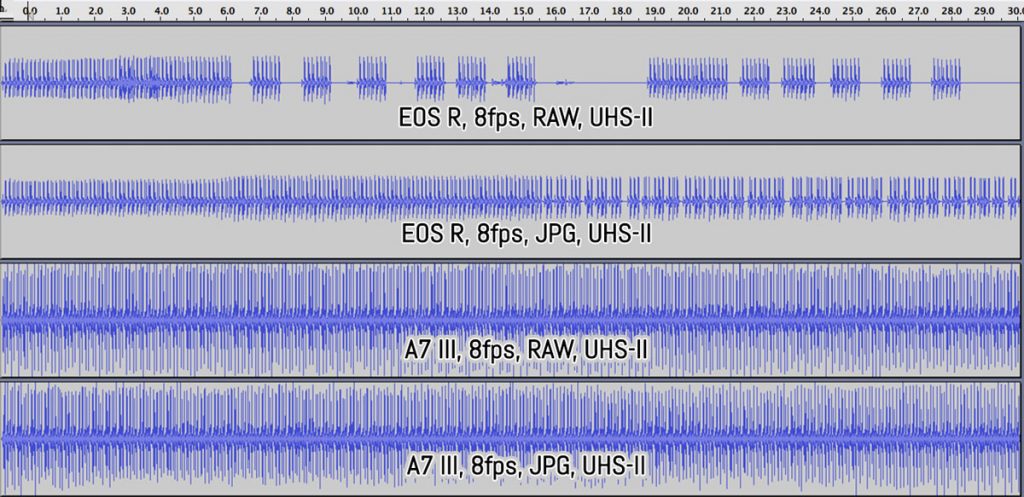
The article continues on page 4:
- Page 1: design and functionality
- Page 2: image quality (stills)
- You are on page 3: autofocus and speed
- Page 4: image stabilisation, video, other features and conclusion
Check the price of the Canon EOS R on:
Amazon | Amazon UK | B&H Photo | eBay
Check price of the Sony A7 III on:
Amazon | Amazon UK | B&H Photo | eBay
Second-hand Canon cameras on
Second-hand Sony cameras on

